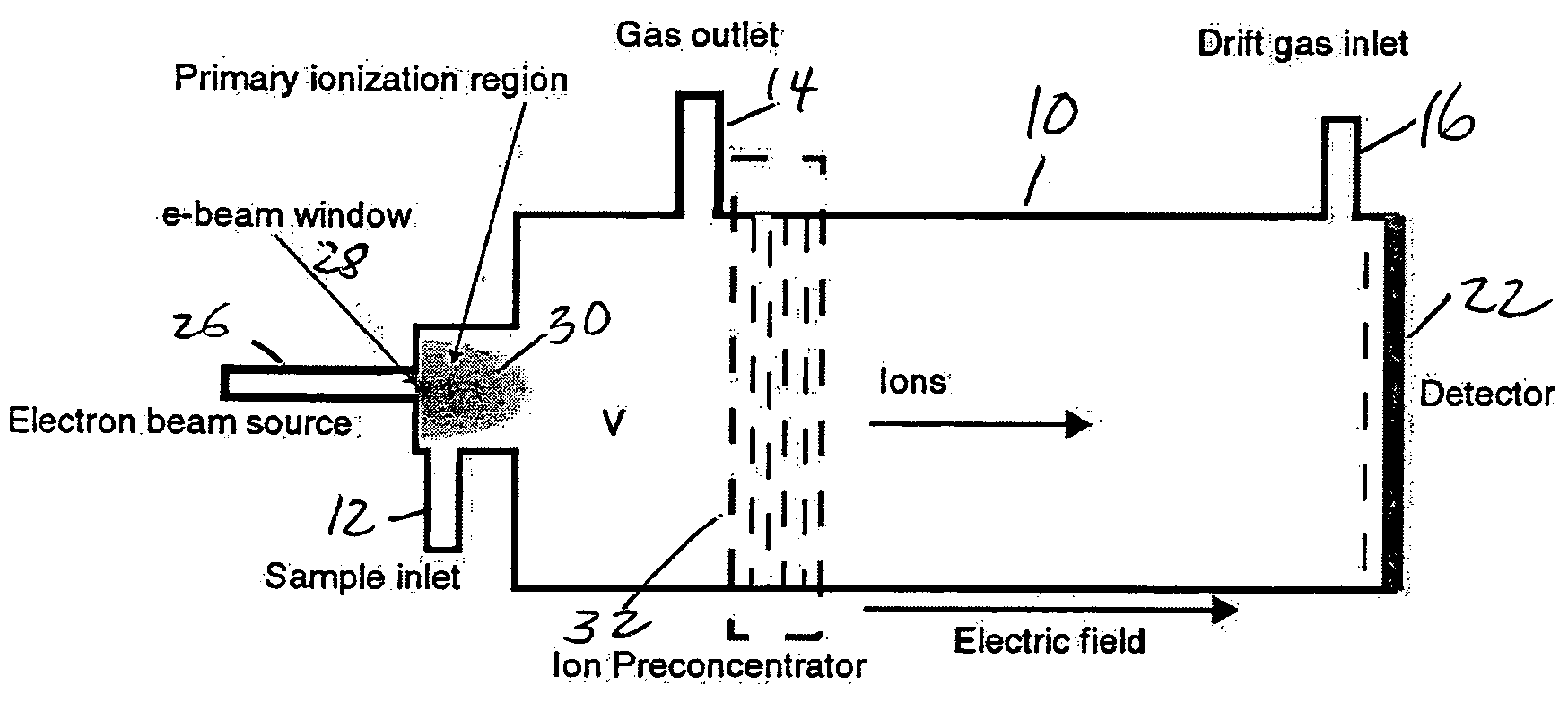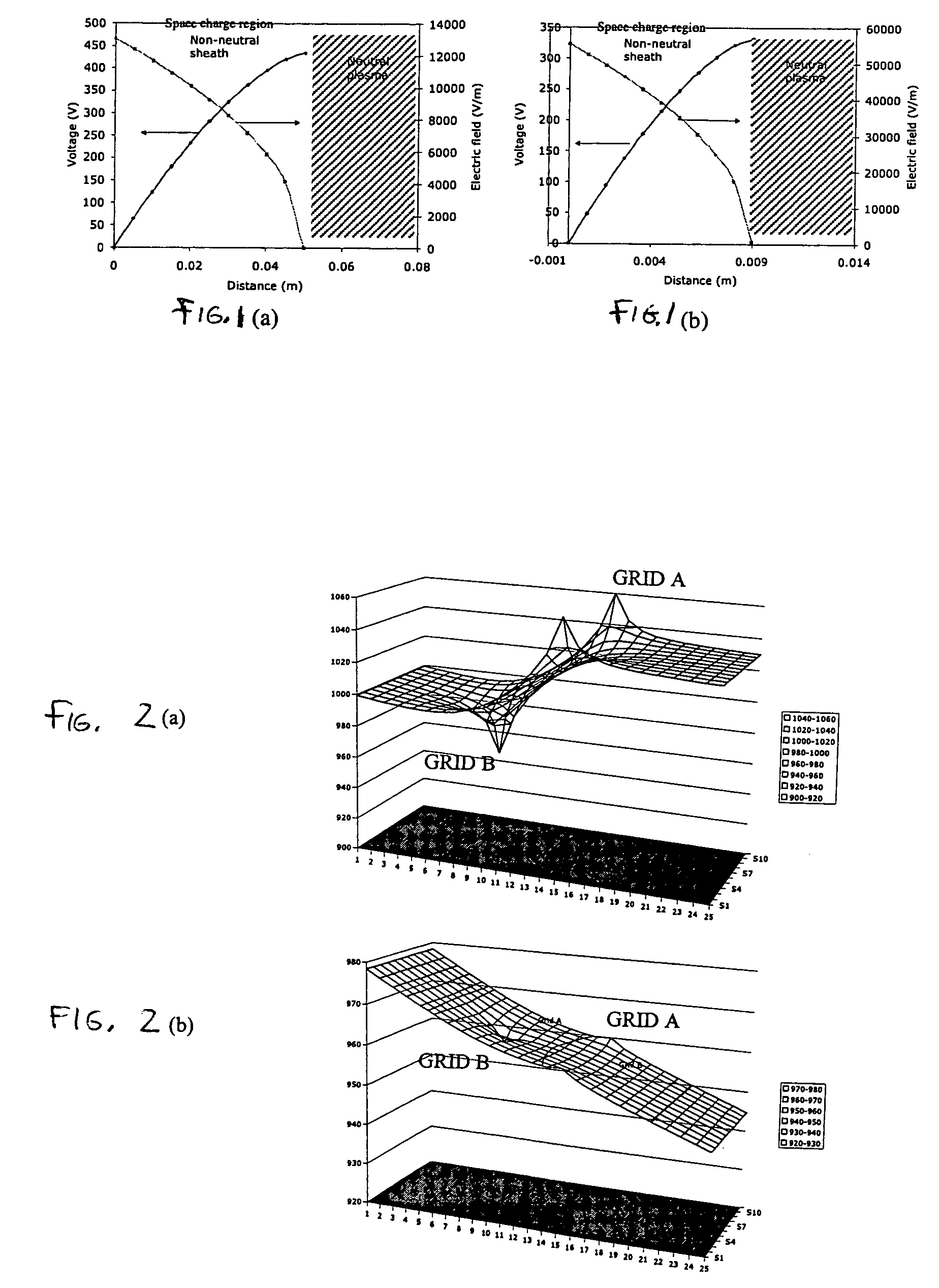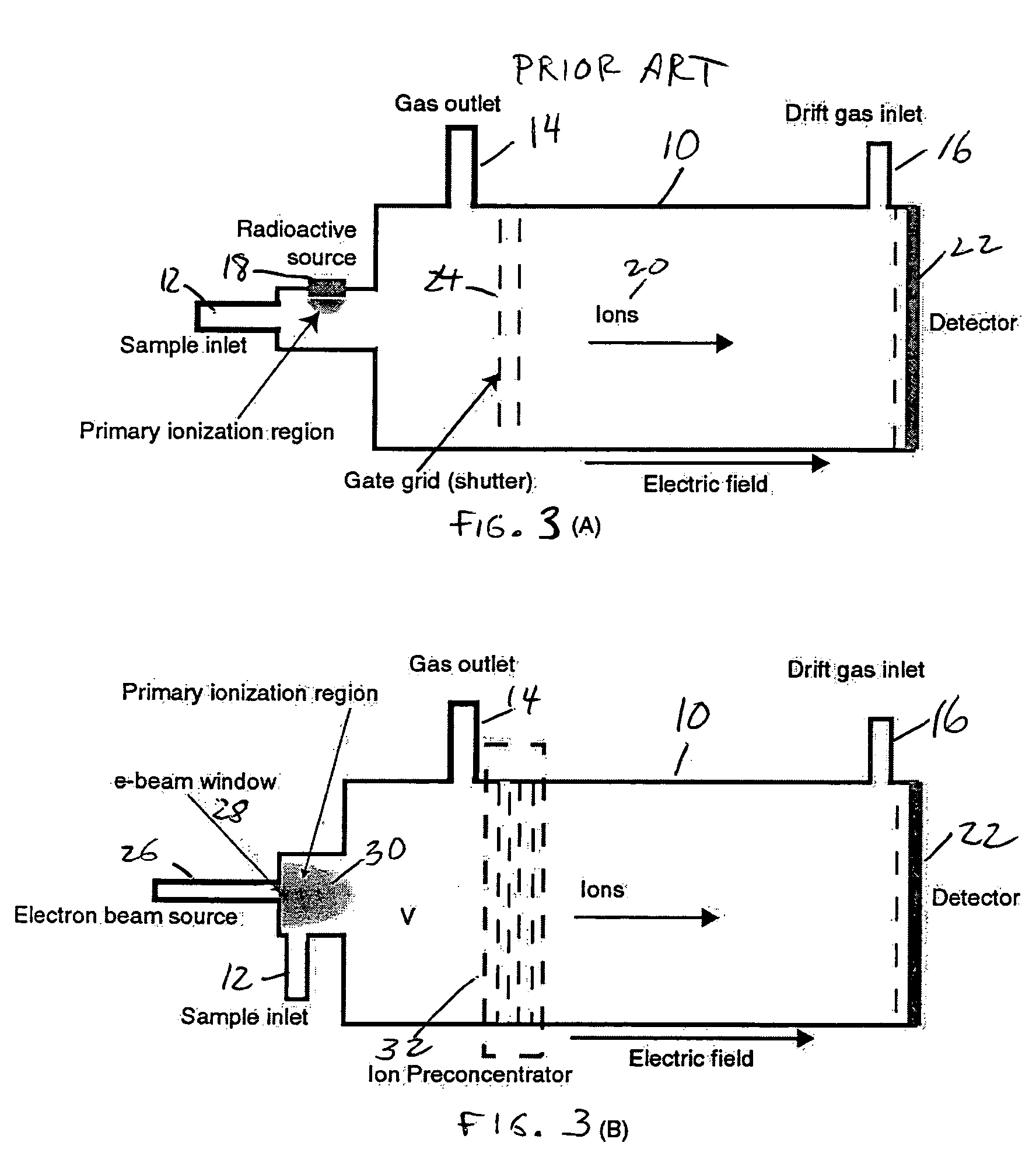Plasma ion mobility spectrometer
a technology of mobility spectrometer and plasma ion, which is applied in the field of plasma ion mobility spectrometer, can solve the problems of limiting resolution, limiting resolution, and not solving the problem of high space charge, so as to reduce distortion of electric fields, reduce the size of feature sizes, and optimize ion preconcentration
- Summary
- Abstract
- Description
- Claims
- Application Information
AI Technical Summary
Benefits of technology
Problems solved by technology
Method used
Image
Examples
Embodiment Construction
[0038] High energy electron beams have been proposed for use with an IMS (VIP Sources for Ion Mobility Spectrometry H.-R. During, G. Arnoldl , V. L. Budovich, Bruker Saxonia Analytik GmbH, Leipzig, Germany and CHROMDET ANALYTICAL INSTRUMENTS, Moscow, Russia). The advantages of using electron beams are pulsed operation, high instantaneous and average currents (related to dose rates) and capability for varying the current. The use of high current dose rate results in high reactive ion density. A high reactive ion density is good in that it is possible to decrease the Minimum Detection Limit (MDL), by ionizing a larger fraction of the molecules of interest. However, to our knowledge, the advantage of using e-beam ionization has not ever been realized. The apparent failure to realize this advantage may be due to space charge effects in the drift region. Conventional IMS devices, as well as an e-beam enhanced one, are shown in FIGS. 3a and 3b.
[0039] A conventional, prior art ion mobilit...
PUM
 Login to View More
Login to View More Abstract
Description
Claims
Application Information
 Login to View More
Login to View More - R&D
- Intellectual Property
- Life Sciences
- Materials
- Tech Scout
- Unparalleled Data Quality
- Higher Quality Content
- 60% Fewer Hallucinations
Browse by: Latest US Patents, China's latest patents, Technical Efficacy Thesaurus, Application Domain, Technology Topic, Popular Technical Reports.
© 2025 PatSnap. All rights reserved.Legal|Privacy policy|Modern Slavery Act Transparency Statement|Sitemap|About US| Contact US: help@patsnap.com



